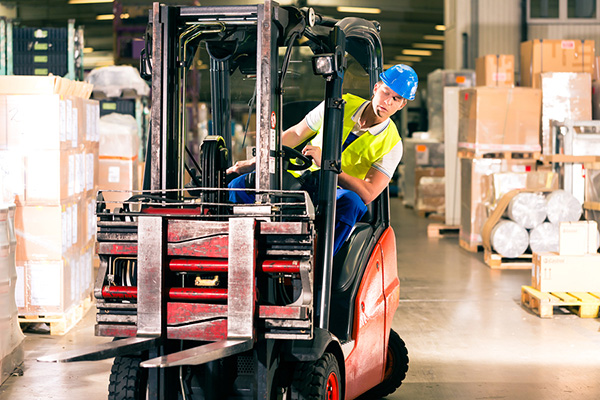Forklift Safety
Forklifts are a major safety issue in Australian workplaces and caused 59 deaths in the 11 years from 2003 to 2013, an average of more than five people each year.
In Victoria alone, around 250 serious injuries are caused by forklifts each year, meaning forklifts are one of the most dangerous pieces of equipment in the workplace, according to a forklift safety handbook from Worksafe Victoria.
The handbook states that out of 56 forklift-related fatalities between 1985 and 2006, 53 per cent (30) of deaths involved pedestrians, 28 per cent (16) were hit by loads and 25 per cent (14) were struck by the forklift they were driving.
Ten of the deaths were as a result of forklift operators being crushed after jumping or falling from the forklift during a tip-over, with Worksafe Victoria stating tip-overs “are the second highest cause of forklift-related deaths”.
Given the serious safety issues, driving a forklift is classified as High Risk by Safe Work Australia and therefore requires the operator to be at least 18 years’ old and hold a high risk work licence – obtained through a Registered Training Organisation (RTO) – that is specific to the application.
“Before an operator starts using a forklift or an attachment that is different to the one used for training and gaining qualifications, further training and supervision is required”, the Australian Government’s 2012 Comcare paper on Forklift Safety states.
Pedestrians:
Given that more than half of all forklift-related deaths are pedestrian-related, a traffic management plan should be implemented to seperate pedestrians and forklifts where possible.
The plan should analyse and outline traffic flows and the most efficient route of travel, along with pedestrian and forklift exclusion zones, safety barriers, floor markings, containment fences and speed limiting devices and signs – among other measures.
Worker training is critical, and removing the use of the forklift entirely is recommended where possible.
Overturning and Tipping:
Overturning forklifts pose significant risks in the workplace and account for one in six forklift-related deaths. Seat belts must be worn and can save lives.
“When an operator jumps or is thrown from an overturning forklift, more often than not they end up trapped under the overturned forklift and a fatality occurs,” according to Worksafe Victoria, which adds that a major cause of forklifts tipping over is when the forks are elevated with no load – which is made worse if the mast is tilted back.
FORKLIFTS WILL LIKELY TIP WHEN:
- Travelling with forks raised and no load.
- Turning sharply.
- Travelling across an incline or uneven ground.
- Travelling with a raised load.
- Carrying a load forwards down a slope.
- Carrying an unevenly balanced load.
- Braking hard when loaded.
(Source: Worksafe Victoria)
Load Safety:
Forklift loads must be carried, lowered and set down in compliance with both the manufacturer’s recommendations and company procedures, according to the Worksafe Victoria Forklift Safety Handbook.
A forklift’s capacity is the maximum weight it can safely carry at a specified load centre and must never be exceeded. The handbook recommends that forklifts are used with a greater capacity than required so as to reduce the risk of exceeding the load capacity.
Stability is compromised when a load is raised or tilted forwards or backwards while driving with a raised load can easily lead to tipping, particularly if the forklift is being driven at speed, around a corner or over an uneven surface.
CHECK YOUR LOAD BEFORE YOU START YOUR ENGINE
- If it’s not placed correctly, reload it.
- Check that the load is within the forklift load limit listed on the load capacity plate.
- If it’s particularly long or wide, check if you need to take an alternative route.
- If pallets are damaged, remove them.
- Ensure pedestrians are not present during forklift operations.
(Source: Worksafe Victoria)
For more on Forklift safety see:
Worksafe Victoria Forklift Safety Handbook
Comcare Guide to Forklift Safety









































































